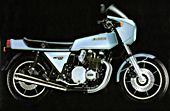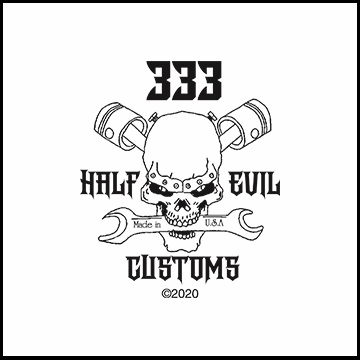1978 Z1-R 1000
- Details
- Written by kzrider kzrider
- Parent Category: Z Information Z Information
- Category: Model history Model history

By 1978, Kawasaki�realized�its once-mighty Z bikes were getting a bit long in the tooth. The Z concept needed some sprucing up, so Kawasaki created the KZ1000-D1, better known as the Z1-R, a factory cafe racer. Mechanically, nor much differed from the standard KZ1000: Carbs grew by a couple of millimeters, a four-into-one exhaust replaced the standard four-into-two unit, the frame was stiffened a bit, the rear shocks were firmed up, the triple-disc brakes were drilled for that Superbike look, and seven-spoke cast wheels replaced the standard wire units. All this resulted in minor improvements in straight-line performance and handling.
What distinguished the Z1-R was its handlebar-mounted quarter fairing, the first to appear as standard equipment on a Japanese bike. In addition to being the first standard-fitment fairing from Japan, Kawasaki's unit gave the folks at Kawasaki Heavy Industries space to mount a few additional gauges. With its relatively rail windscreen, the fairing even afforded decent wind protection. While the angular styling then in vogue may not have the same aesthetic appeal today, the Z1-R certainly caused a stir back in the day.
At least in the enthusiast magazines, that is. The motorcycle-buying public greeted the Z1-R with a group yawn, ignoring it for the more chopperesque LTD models. While this may seem backwards today, remember that American tastes were very different a quarter of a century ago--just look at the hairstyles of the day. So the Z1-R languished on the showroom floor, and as a result there aren't a lot of them for sale today. And while dealers were giving them away at fire-sale prices back in the early '80s, if you find one today, chances are you're going to part with a considerable amount of cash to bring it home.
If you do find a dean one, make certain that it's cosmetically complete and in good shape. Finding original fairings, sidecovers and pipes is nearly impossible. If it's nor dean and complete, it is really worth no more than any other old Kawasaki Z bike. The most likely piece to be missing on a bike that hasn't been crashed is the original pipe, since it will have rusted out unless the bike has been stored properly if the pipe has been replaced with a set of the headers common m the late '70s and early '80s, watch for a leaky head gasket. Otherwise, there isn't a lot that goes wrong with early Z bikes.
Source: Motorcyclist, 11/01/2000, written by Darwin Holmstrom

The Kawasaki Z1 - 1973-1975
This section of KZrider.com features the history, background, and spesifications of the different Kawasaki Z1 models. Use the links below to navigate.
 Model year - much like the automotive industry, the motorcycle model year does NOT follow the calendar year. With the exception of the prototypes and very early production bikes, the Z1 production started in earnest in July 1972. The last of the 1973 Z1's was produced in July 1973. The first 2200 Z1's produced were considered 1972 bikes by the factory - although you will sometimes see an early Z1 advertised as a 1972 bike - being produced in 1972 just means is was one of the first 4,895� Z1's produced.
Model year - much like the automotive industry, the motorcycle model year does NOT follow the calendar year. With the exception of the prototypes and very early production bikes, the Z1 production started in earnest in July 1972. The last of the 1973 Z1's was produced in July 1973. The first 2200 Z1's produced were considered 1972 bikes by the factory - although you will sometimes see an early Z1 advertised as a 1972 bike - being produced in 1972 just means is was one of the first 4,895� Z1's produced.
The largest number of Z1's produced in any one month was in November 1974.� A total of 3,660 bikes were produced by the factory in Japan - an average of over 120 bikes per day.
June 1976 saw the most KZ900's produced, 3,000 of these produced in Japan, another 1840 produced in Lincoln, Nebraska USA
The mighty Z1 was not cheap back in 1973 - the price was right around $2,000.00 in the USA. A little more than that in Canada.
Did you know all the Z1's sold in Canada came through the USA first? So they have the USA frame number sticker on the steering head.
(Source: Z1Enterprises - http://www.z1enterprises.com)





